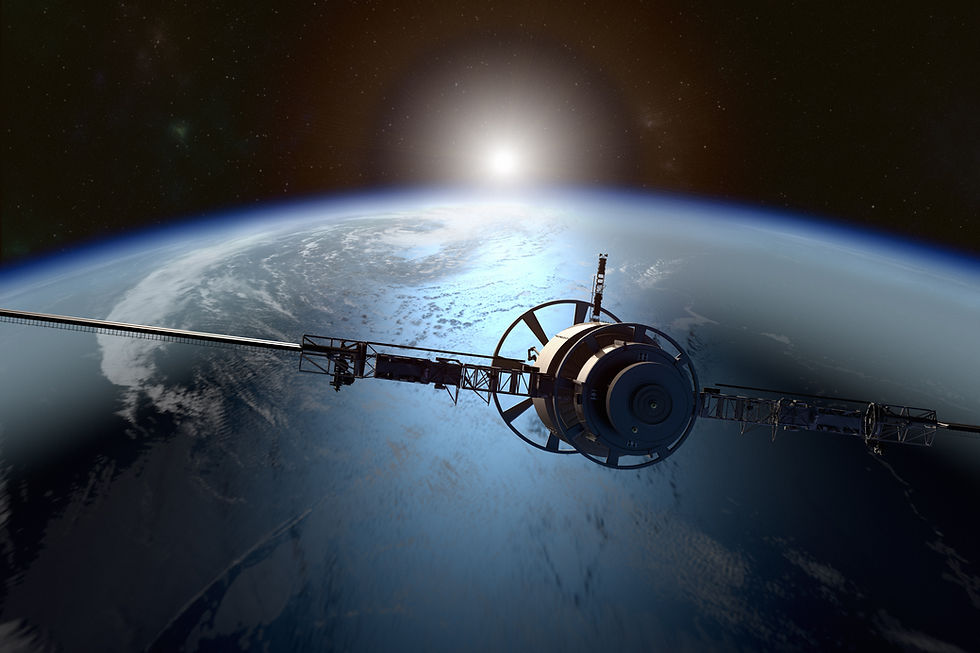Do Satellites Have Night Vision?
- Dr D Sekhar Vaka
- 6 days ago
- 2 min read
Satellites play a crucial role in remote sensing, monitoring environmental changes, and providing critical data for various industries, including infrastructure management, disaster response, and geotechnical analysis.

One common question about satellite technology is whether satellites have night vision capabilities. The short answer is yes!
Satellites utilise advanced sensors to allow them to capture images and gather data in complete darkness.
Optical Imaging Limitations at Night
Traditional optical satellites, such as those using visible light sensors, rely on sunlight to capture images. This means that they cannot produce clear images in darkness unless external light sources, such as the moon or city lights, provide illumination.
Optical satellites like Landsat or Sentinel-2 primarily operate during daylight hours to ensure high-quality image capture.
Infrared and Thermal Imaging
To overcome the limitations of visible light, many satellites are equipped with infrared and thermal sensors that can detect heat emitted from objects on the Earth's surface.
Key features include:
Thermal Infrared Sensors: Detect temperature variations, making them useful for monitoring heat emissions from urban areas, wildfires, and geothermal activity.
Near-Infrared (NIR) Sensors: Used for vegetation analysis and environmental monitoring, as healthy vegetation reflects NIR light.
Shortwave Infrared (SWIR) Sensors: Penetrate through clouds and smoke, improving visibility in challenging conditions.
Synthetic Aperture Radar (SAR) for Night-Time Imaging
One of the most powerful technologies for night-time and all-weather imaging in Synthetic Aperture Radar (SAR). Unlike optical sensors, SAR actively emits microwave signals that penetrate clouds, fog, and darkness to generate high-resolution images from the reflected signals.
Key advantages of SAR include:
24/7 Imaging Capabilities: SAR does not rely on external light sources, allowing continuous monitoring day and night.
Ground Deformation Analysis: SAR-based InSAR (Interferometric SAR) can detect minute ground movements, making it valuable for monitoring landslides, subsidence, and infrastructure stability.
Disaster Response: SAR is used to assess flood extent, earthquake damage, and deforestation even in low-visibility conditions.
Applications of Night-Time Satellite Data
Satellites with night-time capabilities support various applications, including:
Environmental Monitoring: Tracking thermal pollution and urban heat islands.
Disaster Management: Assessing wildfires, oil spills, and emergency power outages in real time.
Geotechnical and Infrastructure Monitoring: Detecting subsidence, ground deformation, and infrastructure stress using InSAR analysis.
While satellites do not have night vision in the conventional sense, they utilise infrared, thermal, and radar technologies to capture imagery and data in darkness. Technologies like SAR and thermal imaging enable continuous monitoring, offering valuable insights for industries ranging from environmental science to geotechnical engineering.
As satellite technology continues to advance, the capabilities for night-time data collection will further improve, enhancing our ability to monitor and respond to global challenges.
Want to read a case study where satellite data monitors infrastructure continuously? Read this article next.


Comentários